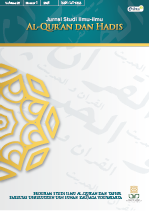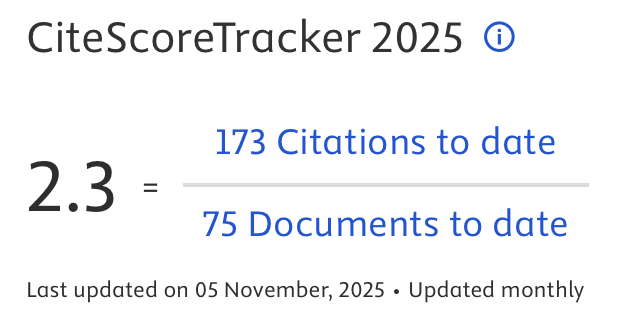AMPLIFICATION OF ISLAMIC DOCTRINES IN HADITH MEMES PROHIBITION OF WOMEN TRAVELS WITHOUT A MAHRAM ON INDONESIAN SOCIAL MEDIA
DOI:
https://doi.org/10.14421/qh.2021.2201-11Keywords:
hadith, memes, netnographic study, mahramAbstract
This paper is a netnographic study of hadith memes prohibition women from traveling without mahram on Indonesian social media. there are three main questions that are in focus: 1) how does classical literature record hadiths related to this theme? 2) how does this hadith exist in memes on Indonesian social media? 3) how did this phenomenon give birth to the amplification of Islamic doctrine? By using content analysis, this study shows: 1) the hadith in this theme is a hadith that is widely known among the Companions of the Prophet and the gatherers of the hadith, and is considered mutually reinforcing, 2) on social media, the hadith exists in various memes; besides the media factor, also the factors of its users which still carry theological aspects, 3) the massive spread of memes in this theme triggers the creation of the Islamic doctrine, and has an effect on the neglect of other more essential aspects of Islamic doctrine. This study also found that the existence of the meme hadith is a re-actualization of classical discourse that is intended as resistance to a variety of religious social phenomena that are deemed deviant, especially in relation to women's freedom in the public sphere. To this point, it must be acknowledged that the memes that are spread are methodologically problematic or irrelevant in a contemporary context. Beyond these findings, the existence of memes with different interpretations but in limited quantities and intended as a counter to memes that have been widespread will further enrich the discourse of hadith studies.
Keywords: hadith, memes, netnographic study, mahram
 Abstract viewed: 2590 times
|
Abstract viewed: 2590 times
|
 PDF downloaded = 1438 times
PDF downloaded = 1438 times
References
@akhwatyfillah. “Hukum Safar Bagi Wanita Tanpa Mahram.”
@akhwatyfillah, 2016.
@lampungmengaji. “Batasan Safar.” facebook.com, 2019.
@Salamdakwah. “Haram Wanita Melakukan Safar Tanpa Mahram.” twitter, 2019.
@tahassunnah. “Hukum Safar Seorang Wanita Dengan Kawan Sesama Wanita.” facebook.com, 2020.
Adlin, Alfathri. “Resistensi Agama: Gerakan Keagamaan Sebagai Resistensi Gaya Hidup.” In Resistensi Gaya Hidup: Teori Dan Realitas, edited by Alfathri Adlin, 2nd ed., 159–73. Yogyakarta & Bandung: Jalasutra, 2015.
Al-‘Azzām, Najāḥ Muḥammad Ḥusain. “Al-Āḥādīṡ Al-Nabawiyyah Al-Wāridah Fī Safar Al-Mar’ah Ma‘a Wujūd Al-Mahram Ma‘Ahā.” Majallah Al-Urduniyah Fī Al-Dirāsah Al-Islāmiyyah 11, no. 2 (2015): 403–33.
Al-Baihaqī, Aḥmad. Al-Sunan Al-Kubrā. Edited by Abd al-Qadīr Aṭā. 3rd ed. Bairut: Dār al-Kutub al-‘Ilmiyyah, 2003.
Al-Bājī, Abū al-Walī. Al-Muntaqā. 1st ed. Mesir: Maṭba‘ah al-Sa‘ādah, n.d.
Al-Barr, Abū ‘Amr ibn ‘Abd. Al-Istiżkār. Edited by Sālim Muḥammad ‘Aṭā. 1st ed. Bairut: Dār al-Kutub al-‘Ilmiyyah, 2000.
Al-Baṭṭāl, Abū al-Ḥasan ibn. Syarḥ Ṣaḥīḥ Al-Bukhārī. Edited by Abū Tamīm Ibrāhīm. 2nd ed. Saudi Arabia: Maktabah al-Rusyd, 2003.
Al-Bustī, Muḥammad ibn Ḥibbān. Al-Iḥsān. Edited by Syu‘aib Al-Arnauṭ. 1st ed. Bairut: Mu’assasah al-Risālah, 1988.
Al-Dakhīl, Sa‘īd. Musū‘Ah Fiqhi ‘Ā’Isyah Umm Al-Mu’Minīn: Ḥayātuhā Wa Fiqhuhā. 1st ed. Bairut: Dār al-Nafā’is, 1989.
Al-Kasymīrī, Muḥammad Anwar Syah. Faiḍ Al-Bārī ‘alā Ṣaḥīḥ Al-Bukhārī. Edited by Muḥammad Badr. 1st ed. Bairut: Dār al-Kutub al-‘Ilmiyyah, 2005.
Al-Nawawī, Abū Zakariyyā. Al-Majmū‘ Syarḥ Al-Muhażżab. Bairut: Dār al-Fikr, n.d.
———. Al-Minhāj Syarḥ Ṣaḥīh Muslim Ibn Al-Ḥajjāj. Bairut: Dār Iḥyā’ al-Turāṡ al-‘Arabī, n.d.
Al-Qurṭubī, Abū al-‘Abbās. Al-Mufhim. Edited by Maḥmūd Ibrāhīm Muḥy al-Dīn Dīb, Aḥmad Muḥammad al-Sayyid, Yūsuf ‘Alī. 1st ed. Bairut: Dār Ibn Kaṡīr, 1996.
Allifiansyah, Sandy. “Kaum Muda , Meme , Dan Demokrasi Digital Di Indonesia.” Jurnal Ilmu Komunikasi 13, no. 2 (2016): 151–64.
Amie.Ummubara. “Hukum Safar Seorang Wanita Dengan Kawan Sesama Wanita.” amie.ummubara, 2019.
Bakry, Umar Suryadi. “Pemanfaatan Metode Etnografi Dan Netnografi Dalam Penelitian Hubungan Internasional.” Jurnal Global & Strategis 11, no. 1 (2017): 15–26. https://doi.org/10.20473/jgs.11.1.2017.15-26.
Ciolan, Lucian, and Loredana Manasia. “Reframing Photovoice to Boost Its Potential for Learning Research.” International Journal of Qualitative Methods 16, no. 1 (2017): 1–12.
https://doi.org/10.1177/1609406917700647.
Fotodakwah.com. “Hukum Safar Seorang Wanita Dengan Kawan Sesama Wanita.” fotodakwah.com, 2019.
Ghufron, Fathorrahman. Ekspresi Keberagamaan Di Era Milenium. Edited by Kaha Anwar. 1st ed. Yogyakarta: IRCiSoD, 2016.
Hasanah, Ummi, and Ahmad Rajafi. “Hadits Perempuan Melakukan Perjalanan Tanpa Maẖ Ram Perspektif Hermeneutika Paul Ricoeur,” n.d.
Imron, Ali. “The Millenial Generation, Hadith Memes, and Identity Politics: The New Face of Political Contestation in Contemporary Indonesia.” ULUL ALBAB Jurnal Studi Islam 20, no. 2 (2019): 255.
https://doi.org/10.18860/ua.v20i2.5675.
Kaya, Sabri, Metin Argan, and Gözde Yetim. “From Experience to Summit or Vice Versa? Netnography Study on a Virtual Community of Mountaineering.” Universal Journal of Educational Research 5, no. 7 (2017): 1117–26. https://doi.org/10.13189/ujer.2017.050705.
Kemdikbud. “Amplifikasi.” In KBBI Daring. Badan Pengembangan dan Pembinaan Bahasa, 2016. https://kbbi.kemdikbud.go.id/entri/amplifikasi.
Kozinets, Robert V. “The Field behind the Screen: Using Netnography for Marketing Research in Online Communities.” Journal of Marketing Research 39, no. 1 (2002): 61–72. https://doi.org/10.1509/jmkr.39.1.61.18935.
Kurniasih, Nuning. “Pemilihan Gubernur DKI Jakarta 2017 Dalam Meme : Sebuah Analisa Isi Terhadap Meme- Meme Di Dunia Maya.” In SEMINAR NASIONAL POLITIK DAN KEBUDAYAAN, edited by Rina Hermawat; Dede Tresna; Mudiyati Rahmatunnisa Wiyanti;, 279. Bandung: Unpad Press, 2017. https://doi.org/10.13140/RG.2.2.19030.04162.
Mansyuroh, Firqah Annajiyah. “Analysis of Legal Change for Women Traveling without Mahram: A Case Study of the Kingdom of Saudi Arabia Royal Decree No . M/134 of 2019.” Al-Ihkam 14, no. 2 (2019): 199–218.
Miski. “Fenomena Meme Hadis Celana Cingkrang Dalam Media Sosial.” Harmoni 16, no. 2 (2017): 291–306.
———. “Komikisasi Hadis: Arah Baru Syarah Hadis Di Indonesia Studi Kritis Atas 99 Pesan Nabi: Komik Hadis Bukhari-Muslim.” Millati: Journal of Islamic Studies and Humanities 2, no. 1 (2017): 125–44. https://doi.org/10.18326/mlt.v2i1.125-144.
———. “Nalar Hermeneutis Ulama Hadis: Larangan Perempuan Bepergian Tanpa Mahram Dalam Ruang Sejarah Pemahaman.” DINIKA : Academic Journal of Islamic Studies 5, no. 1 (2020).
https://doi.org/10.22515/dinika.v5i1.2464.
Mudin, Miski. ISLAM VIRTUAL, Diskursus Hadis, Otoritas, Dan Dinamika Keislaman Di Media Sosial. Edited by Nurul Afifah. 1st ed. Yogyakarta: BILDUNG, 2019.
Najwah, Nurun. “Fenomena ‘Mahram Haji’ Di Indonesia” 42, no. Ii (2008).
O’Donohoe, Stephanie. Netnography: Doing Ethnographic Research Online. International Journal of Advertising. Vol. 29, 2010. https://doi.org/10.2501/S026504871020118X.
———. “Netnography: Doing Ethnographic Research Online.” International Journal of Advertising 29, no. 2 (January 1, 2010): 328–30. https://doi.org/10.2501/S026504871020118X.
Qāsim, Ḥamzah Muḥammad. Manār Al-Qārī. Damaskus: Maktabah Dār al-Bayān, 1990.
Qudsy, Saifuddin Zuhri. “Internet, Pendangkalan, Dan Deotorisasi Dalam Studi Hadits.” jatim.nu.or.id, 2019.
———. “Meme Hadis Celana Cingkrang: Menciptakan Budaya Tanding.” Pusat Media Damai, 2016. https://jalandamai.org/meme-hadis-celana-cingkrang-menciptakan-budaya-tanding.html.
Ratna. “Kajian Etnografi Terhadap Komunitas Cyber DBC Network.” Jurnal Teknologi Informasi Dan Komunikasi 7, no. 2 (2018): 54–63.
https://jurnal.kominfo.go.id/index.php/jtik/article/view/774/pdf.
Rulli Nasrullah. Media Sosial: Perspektif Komunikasi, Budaya, Dan Sosioteknologi. Edited by Nunik Siti Nurbaya. 4th ed. Bandung: Simbiosa Rekatama Media, 2017.
Ruray, Sofyan. “Larangan Safar Tanpa Mahram Bagi Wanita Meski Untuk Haji Dan Umroh.” sofyanruray.info, 2015.
Scott, James C. Domination and the Arts of Resistance. New Haven & London: Tale University Press, 1990.
http://repositorio.unan.edu.ni/2986/1/5624.pdf.
Shalihah Jek. “Hukum Muslimah Naik Ojek.” Shalihah Jek, 2019.
Suryadilaga, Muhammad Alfatih. Metodologi Syarah Hadis. Yogyakarta: Kalimedia, 2017.
Taqwart. “Bolehkah Muslimah Safar Tanpa Mahram?,” 2020.
Ulya, Atiyatul. “Atiyatul Ulya, Maulana , Penyertaan Mahram Pada Pelaksanaan Haji Dan Umrah | 197,” 2015, 197–222.
———. “Konsep Mahram Jaminan Keamanan Atau Pengekangan Perempuan.” Al-Fikr 17, no. 1 (2013): 245–55.
Wadipalapa, Rendy Pahrun. “Meme Culture & Komedi- Satire Politik : Kontestasi Pemilihan Presiden Dalam Media Baru.” Jurnal Ilmu Komunikasi 2, no. 1 (2015): 1–18.
Yusuf al-Qaradawi. Kaifa Nata’amal Ma’a Al-Sunnah Al-Nabawiyyah. 2nd ed. Kairo: Dar al-Syuruq, 2002.
Downloads
Published
How to Cite
Issue
Section
License
Publishing your paper with Jurnal Studi Ilmu-ilmu al-Qur'an dan Hadis means that the author or authors retain the copyright in the paper. Jurnal Studi Ilmu-ilmu al-Qur'an dan Hadis uses license CC-BY-NC-ND or an equivalent license as the optimal license for the publication, distribution, use, and reuse of scholarly works. This license permits anyone to copy and redistribute the material in any medium or format and must give appropriate credit, provide a link to the license, and indicate if changes were made. If you remix, translate, transform or build upon the material you may use it for private use only and not for distribution. Jurnal Studi Ilmu-ilmu al-Qur'an dan Hadis granted an exclusive non-commercial reuse license by the author(s), but the author(s) are able to put the paper onto a website, distribute it to colleagues, give it to students, use it in your thesis, etc, so long as the use is not directed at a commercial advantage or toward private monetary gain. The author(s) can reuse the figures and tables and other information contained in their paper published by Jurnal Studi Ilmu-ilmu al-Qur'an dan Hadis in future papers or work without having to ask anyone for permission, provided that the figures, tables, or other information that is included in the new paper or work properly references the published paper as the source of the figures, tables or other information, and the new paper or work is not direct at a private monetary gain or commercial advantage.
Jurnal Studi Ilmu-ilmu al-Qur'an dan Hadis journal Open Acces articles are distrubuted under the Creative Commons Attribution-NonCommercial-NoDerivatives 4.0 International (CC BY-NC-ND 4.0). Article can be read, copy and redistribute the material ini any medium or format under the following conditions:
Attribution — You must give appropriate credit, provide a link to the license, and indicate if changes were made. You may do so in any reasonable manner, but not in any way that suggests the licensor endorses you or your use.
NonCommercial — You may not use the material for commercial purposes.
NoDerivatives — If you remix, transform, or build upon the material, you may not distribute the modified material.










